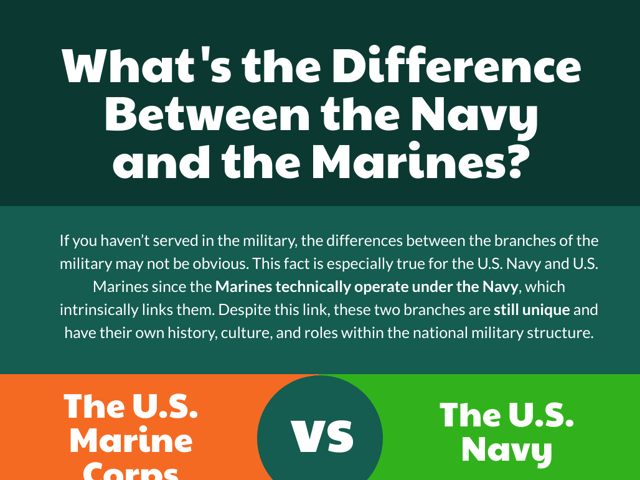
What’s the Difference Between the Navy and the Marines?
If you haven’t served in the military, the differences between the branches of the military may not be obvious. This fact is especially true for the U.S. Navy and U.S. Marines since the Marines technically operate under the Navy, which intrinsically links them. Despite this link, these two branches are still unique and have their own history, culture, and roles within the national military structure.
The U.S. Marine Corps
The Marine Corps is technically a part of the U.S. Navy and the Commandant of this branch of the military reports to the Secretary of the Navy, who in turn, reports to the Secretary of Defense. And while this structure suggests certain similarities, the Marines are actually structured more like the U.S. Army than the Navy. In this manner, the Marines include teams, squadrons, platoons, and battalions that fall under three categories, including basic units, expeditionary forces, and aircraft units.
The U.S. Navy
The Navy, on the other hand, has a much more complex structure with a longer history than the Marines. There are operational combatant commands and various administrative commands, each of which has a particular mission. These missions lead to the different areas of responsibility for the Navy and the Marines.
Mission Differences
The Navy’s mission is to protect the U.S. on the seas by defending allies, economic prosperity, and travel, and promoting freedom of the seas. This mission is accomplished using fleets of ships. The Marine Corps is a force that emphasizes combat operations and members are often the first response during a military conflict. They are combat-ready both on land and at sea.
Training Requirements
Because of the differences in missions and goals between these two branches of the military, they have very different training requirements. Basic training for the Navy is generally eight weeks long and focuses on topics including physical fitness, firearms, shipboard emergency, and firefighting training. All aspects of this training focus on operations aboard a ship. Marine recruits, by contrast, have a different training regiment that lasts twelve weeks and includes firearms, hand-to-hand combat, basic battle strategies, and combat first aid.
While both of these branches of the military are technically part of the U.S. Navy, there are key differences between them. Members who enlist in either branch can expect a very different military experience from the recruits in the other branch.

Keep Reading

Armed Services Vocational Aptitude Battery Blog
What is the ASVAB Test?
The Armed Services Vocational Aptitude Battery, known as the ASVAB, is …

Armed Services Vocational Aptitude Battery Blog
Military MOS Codes
Military Occupational Specialty (MOS) codes are an integral part of the…

Armed Services Vocational Aptitude Battery Blog
U.S. Army Height and Weight Standards for Females
The U.S. Army’s commitment to maintaining a robust, physically fit, and…